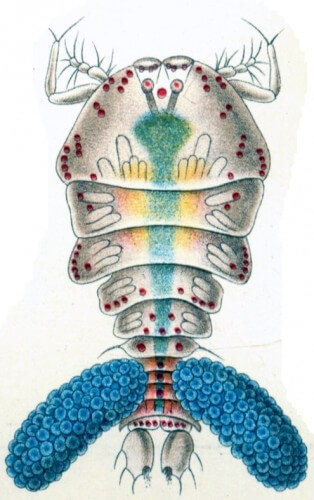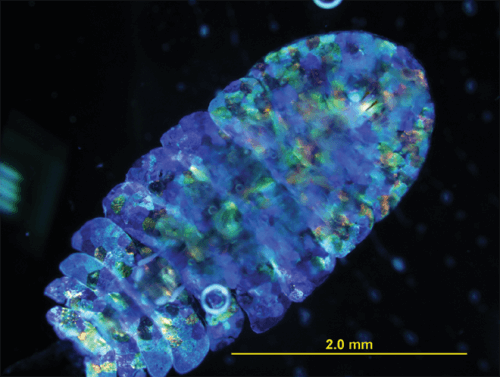New insights into how marine creatures can control their visibility

Tiny sea creatures called "sea sapphires" (Sapphirinidae) are capable of performing "magic" of the kind favored by human magicians: while swimming, they display brilliant and majestic shades of blue, purple or green, and the next moment they can become invisible (at least the blue between which become completely transparent). How do they get their glowing colors and what allows them to "disappear"? Weizmann Institute of Science scientists recently succeeded in solving the mystery. The research findings, which were published in the Journal of the American Chemical Society, can inspire the development of future optical technologies.
The sea lions belong to a subclass of crustaceans called cetaceans; And they live in both fresh and salt water. These animals are barely visible to the human eye, and their length ranges from one to several millimeters. The male sea sapphire is the one that exhibits impressive and warning colors, while the female is transparent. Scientists believe that their "disappearance magic" can help sea sapphires evade predators when necessary, but still display their impressive colors when a female of their species - or possibly another male - is in their vicinity.
Prof. Leah Eddy, Prof. Steve Weiner, and research students Dvir Gore and Maria Fairantoni from the Department of Structural Biology at the Weizmann Institute of Science; Prof. Dan Oron and research student Ben Leshem from the Department of Physics of Complex Systems at the Weizmann Institute of Science; and Dr. Viviana Prestay from the Inter-University Institute of Marine Sciences in Eilat, examined the composition of the crystalline layer on the backs of male sea lions of several species. At first, they measured the relative part of the intensity of the light returning from the surface from the one that hits it, by which the color can be determined and then, using a scanning electron microscope at low temperatures, they watched the way the crystals organized together with the cellular material that holds them in place.
These colors result from the surface glow in the range of rainbow colors - a result of light reflected from multi-layered cyclic structures. It is a type of structure known to scientists as a photonic crystal, which consists of thin and transparent crystals of guanine (one of the nucleic acids found in DNA).
The scientists found that the guanine plates in the sea sapphires are arranged in remarkably precise periodic arrays. What gives each species its unique color? Through analysis it was revealed that the main factor determining whether the sea sapphire will be yellow, blue or purple is the degree of spacing between the guanine plates, which is controlled by the thin layer of cellular material that separates the plates.
The scientists even showed how this complex arrangement of guanine plates allows some sea urchins to disappear from view: when certain species of male sea urchins turn their backs to the light at a 45-degree angle while performing a spiral swimming maneuver, the wavelength of the reflected light is deflected out of the range of wavelengths of visible light, and passes into the wavelength range of invisible ultraviolet radiation. On the other hand, light hitting at a right angle returns the beautiful blue color.

In the light found in the depths of the ocean, coming from above, the tiny sea sapphire is able to control its visibility, from glowing color to complete transparency and invisibility, simply by adjusting its "rudder".
The spacing between the plates is used as a type of "adjustment" of the wavelength of the light and therefore also of the color of the animals: the closer the plates are to each other, the shorter the wavelength reflected from them, that is, the bluer the light. This sophisticated strategy for controlling light, the scientists say, could possibly, in the future, be used to design artificial photonic crystal structures that could control the flow of photons. Such crystals may have many uses, including adaptive or tunable reflective coatings, optical mirrors, and optical displays.

3 תגובות
The sapphire of the sea, in an existing sea, and then suddenly... to the HDM,
Sad Eitan, where is Sapir?, it's a dirty business, Mr. Sabdarmish!
Yehuda
What do you have against a title in rhymes..?
Disappeared?, it is better to call the phenomenon: became invisible. He is no longer a creature that does not exist today, but a creature that is able to be transparent and invisible.
Yehuda